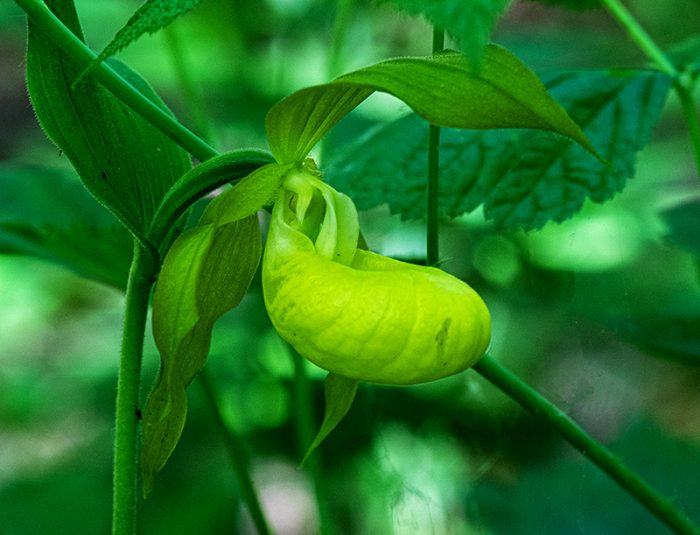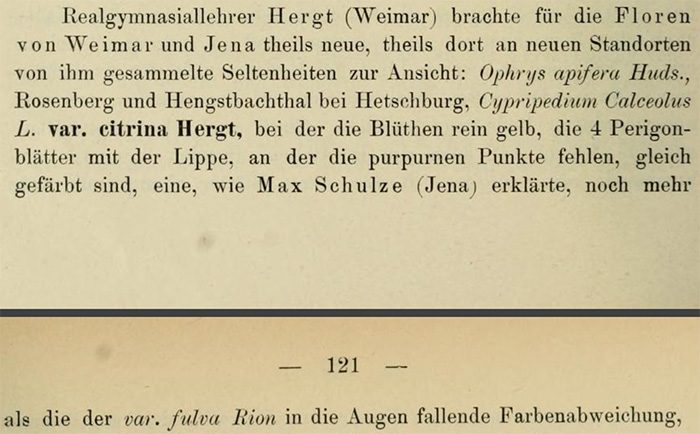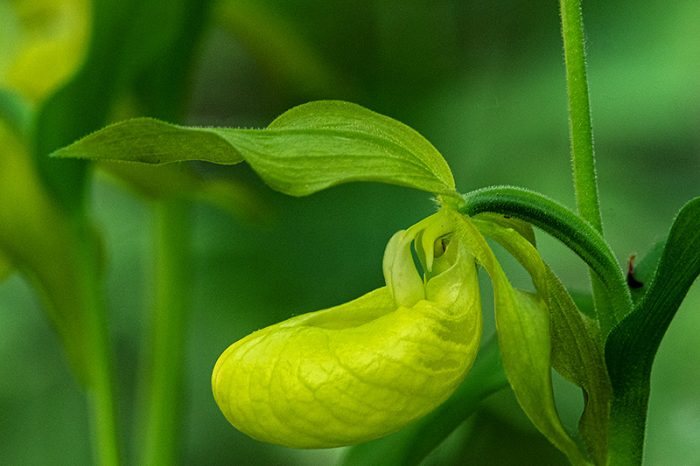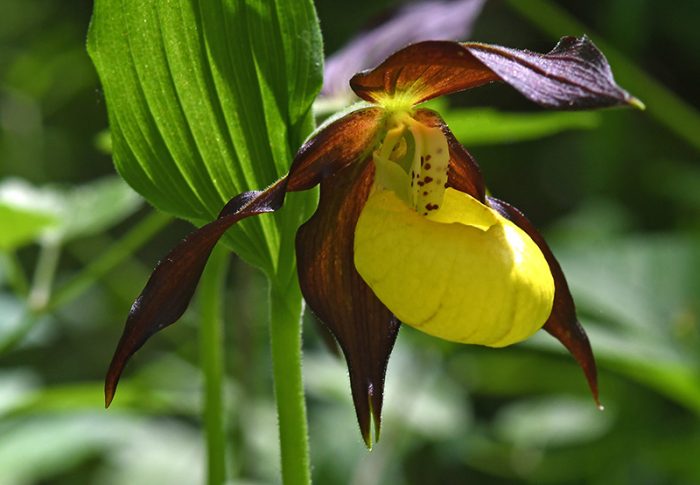
It’s very rarely that the Lady’s Slipper orchid (Cypripedium calceolus) is flowering without the brown-red color in sepals and petals. As with other orchid species this color is created by a pigment from the group of anthocyanines, called chrysanthemin. If this pigment is not produced, there are only carotinoids and chlorophyll left als coloring pigments. The results are yellow to greenish flowering plants. In contrast to Orchis or Dactylorhiza – but similar to Ophrys – the flowers of Cypripedium calceolus also contain chlorophyllum, thus participating in the photosynthesis.
No species of this genus has so many taxonomic descriptions of varieties as C. calceolus, writes Wolfgang Eccarius in his book Die Orchideengattung Cypripedium (Buergel 2009). In Thuringia, plants with pure yellow petals and sepals has been described as var. citrina by the teacher and botanist Bernhard Hergt (1858-1920), in Mittheilungen des Thueringischen Botanischen Vereins 1899, S.120f., indicated as f. citrinum by Eccarius.

A forma viridiflorum with greenish perigon (sepals and petals) has been described in the same journal in 1897 by Max Schulze (1841 – 1915). The author of the oldest of these descriptions is Alphonse Rion (1809-1856), who named a flava, a forma flavum, in his Guide du Botaniste en Valais, published in 1872.


Those plants without Chrysanthemin also miss the common crimson dots on the staminodium at the entrance of the labellum.
